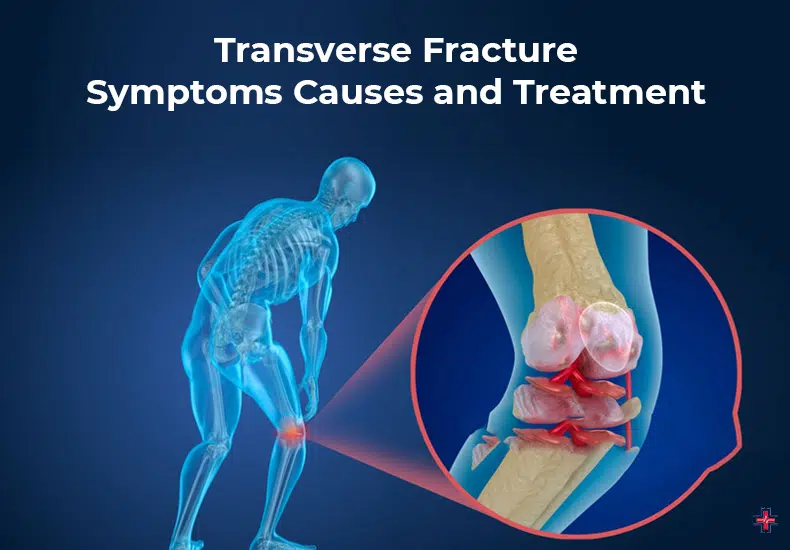Transverse Fracture: 7 Important Facts You Need to Know

Introduction
A transverse fracture is a type of bone break that occurs in a straight line across the bone. This kind of fracture is usually caused by direct impact or excessive force, such as a car accident, a fall, or a sports injury. Immediate medical attention is crucial to prevent complications and ensure proper healing.
What Is a Transverse Fracture?
A transverse fracture happens when a bone breaks at a 90-degree angle to its axis. These fractures can occur in any bone but are most commonly seen in long bones such as the femur, tibia, and humerus.
7 Key Facts About Transverse Fractures
1. Causes of Transverse Fractures
-
Direct trauma from falls, accidents, or sports injuries.
-
Repetitive stress on bones, leading to stress fractures that can turn into transverse fractures.
-
Conditions like osteoporosis that weaken bones.
2. Common Symptoms
-
Severe pain at the injury site.
-
Swelling and bruising.
-
Difficulty moving the affected limb.
-
Visible deformity in severe cases.
3. Diagnosis of Transverse Fractures
Doctors diagnose transverse fractures using:
-
X-rays to visualize the break.
-
CT scans for complex fractures.
-
Physical examination to assess symptoms.
4. Treatment Options
-
Immobilization with a cast or splint for minor fractures.
-
Surgery (Open Reduction and Internal Fixation) for severe cases.
-
Pain management with medication.
-
Physical therapy for recovery.
5. Recovery Time
-
Mild cases may heal in 6-8 weeks.
-
Severe fractures may take several months with rehabilitation.
6. Potential Complications
-
Delayed healing due to improper care.
-
Infections after surgery.
-
Nonunion or malunion, where bones heal incorrectly.
7. When to Seek Emergency Care?
Visit ER of Mesquite immediately if you experience:
-
Severe pain and swelling.
-
Inability to move the affected limb.
-
Numbness or tingling around the fracture.
-
Bone piercing through the skin.
Preventing Transverse Fractures
-
Maintain a balanced diet rich in calcium and vitamin D.
-
Exercise regularly to improve bone strength.
-
Use protective gear when playing sports.
-
Avoid hazardous conditions that increase fall risks.
FAQs About Transverse Fractures
1. Can a transverse fracture heal without surgery?
Yes, minor fractures can heal with a cast or splint. However, severe cases often require surgery.
2. How painful is a transverse fracture?
It can be very painful due to the severity of the break and swelling around the bone.
3. What happens if a transverse fracture is not treated?
It may lead to improper healing, chronic pain, and reduced mobility.
4. How can I speed up recovery from a transverse fracture?
Follow medical advice, attend physical therapy, eat a healthy diet, and avoid putting pressure on the healing bone.
5. What is the difference between a transverse fracture and other fractures?
A transverse fracture is a clean break across the bone, while other fractures may be spiral, oblique, or comminuted (shattered).
- Questions and Answers
- Opinion
- Motivational and Inspiring Story
- Technology
- Live and Let live
- Focus
- Geopolitics
- Military-Arms/Equipment
- Безопасность
- Economy
- Beasts of Nations
- Machine Tools-The “Mother Industry”
- Art
- Causes
- Crafts
- Dance
- Drinks
- Film/Movie
- Fitness
- Food
- Игры
- Gardening
- Health
- Главная
- Literature
- Music
- Networking
- Другое
- Party
- Religion
- Shopping
- Sports
- Theater
- Health and Wellness
- News
- Culture

